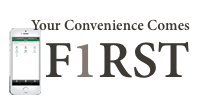
Educational Borrowing
The Cost of Education
As costs continue to rise, more and more students find it necessary to borrow money to pay for their education. At First Nations Bank, we believe that the last thing you should be worried about the night before a big exam is whether or not you can afford to enroll for another term. Fortunately, from government student loans to credit lines designed to meet the needs of students, there are a number of financial solutions available to you.
How Much Should You Borrow?
Before applying for a loan, you will need to make a budget. First, calculate your expenses for the upcoming school year including tuition, books, transportation and the costs of living. Next, determine how much money you already have to contribute and how much you expect to make over the course of the year. The difference between the two figures is the amount you'll need to borrow.
Also consider your repayment strategy. Are the terms of the loan acceptable? Will you be able to handle the monthly payments? If not, you'll need to look for alternate ways to finance your education, or reduce your total costs.
Borrowing Options
In most cases, government student loans offer the best terms. There are no payments due and no interest until after graduation. Further, if you qualify for loan remission, you may only have to pay back a portion of the loan.
If you are not eligible for a government loan, another option is a Student Line of Credit. A Line of Credit line can go a long way toward covering your expenses while in school. Although the terms are not as good as those of a government loan, they are usually better than the terms of other personal loans.




